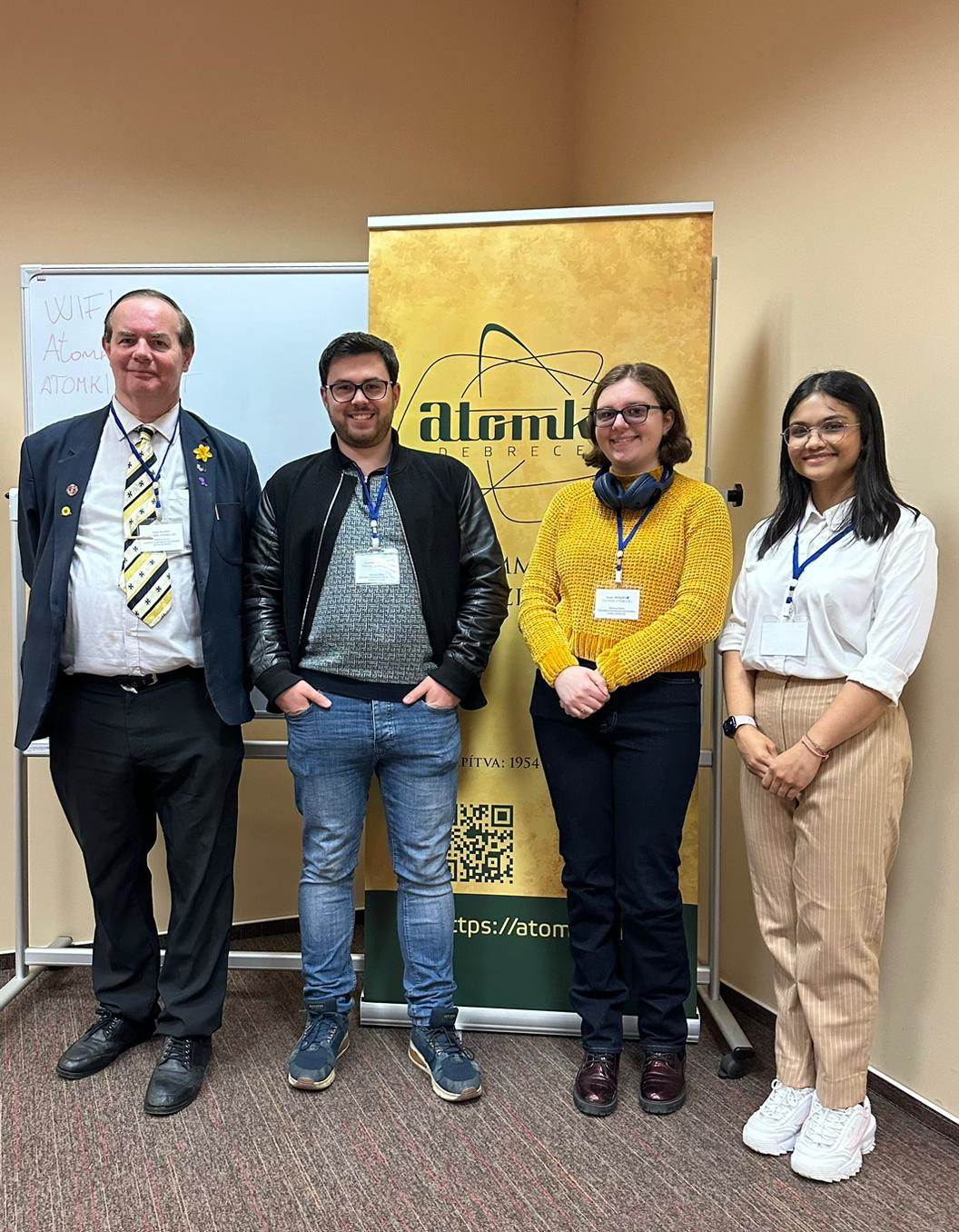
Students Gained International Experience and Conducted Practical Experiments at Atomki for Their Postgraduate Projects in Space Science
The KAIROS initiative at the University of Kent proudly represented at the recent Radiation-Driven Chemistry in Astrophysics and Planetary Science Workshop, which took place on April 25th and 26th, 2024, at the HUN-REN Institute for Nuclear Research (Atomki) in Debrecen, Hungary. The event drew approximately 45 international attendees. Members of KAIROS, including Nigel Mason, Adrija Bhowmick, Jessie Phillpot, and Jonathan Cousins, had the opportunity of touring the Ice Chamber for Astrophysics / Astrochemistry (ICA) and Atomki Queens University Ice chamber for Laboratory Astrochemisty (AQUILA) facilities. This visit provided them with invaluable firsthand insights into the cutting-edge research facilities at the HUN-REN Institute.
Following the workshop, Adrija, Jessie and Jonathan engaged in a series of experiments in AQUILA from April 29th to May 10th, 2024. This laboratory is designed to investigate the effects of ion irradiation on interstellar and Solar System ice analogues. Utilising the Atomki Electron Cyclotron Resonance Ion Source (Atomki-ECRIS), which produces molecular, multiply positive, and negative ions in various species and charge states, the experiments aimed to replicate the impacts of galactic cosmic rays and stellar winds. The main objective of this experimental setup is to conduct a systematic investigation of space-relevant ices under various ion impact conditions, such as energy levels, fluxes, and types of projectiles, to enhance our understanding of the origin and evolution of the building blocks of life.
Jessie’s research is concentrated on the irradiation of perchlorates and organics under Martian-like conditions to explore the survivability of organics on Mars. In AQUILA, samples containing magnesium perchlorate hexahydrate, Mg(ClO4)2.6H2O, were drop-casted onto calcium fluoride (CaF2) substrates, and further bombarded with protons, used as solar wind mimetics, at room temperature and a Mars-relevant temperature of 210 K. A Fourier-transform infrared spectroscopy (FTIR) system enabled continuous in-situ spectral analysis during irradiation, while a quadrupole mass spectrometer (QMS) was employed to detect any sputtering of the sample from the substrate. The experiments were designed to investigate the decomposition of perchlorates and to identify reactive species that could potentially interact with organics.
Jonathan and Adrija are investigating materials for lunar habitats, focusing on how they respond to irradiation and temperature cycles from 200 K to 350 K, simulating lunar conditions. The experiments aim to develop a framework and methods for assessing material durability under prolonged lunar exposure. The samples underwent proton irradiation mimicking 40 years of solar wind exposure and endured four temperature cycles, equivalent to four lunar months. Subsequently, they were analysed using Atomki’s optical microscope, QMS, and X-ray diffractometer to detect any deformation changes.
These experiments were crucial in developing skills and techniques for analysis as well as obtaining a better understanding of the experimental equipment available at Atomki. They provided an opportunity for the team to gain hands-on experience with the sophisticated equipment at AQUILA, which is essential for the success of their postgraduate projects within KAIROS.